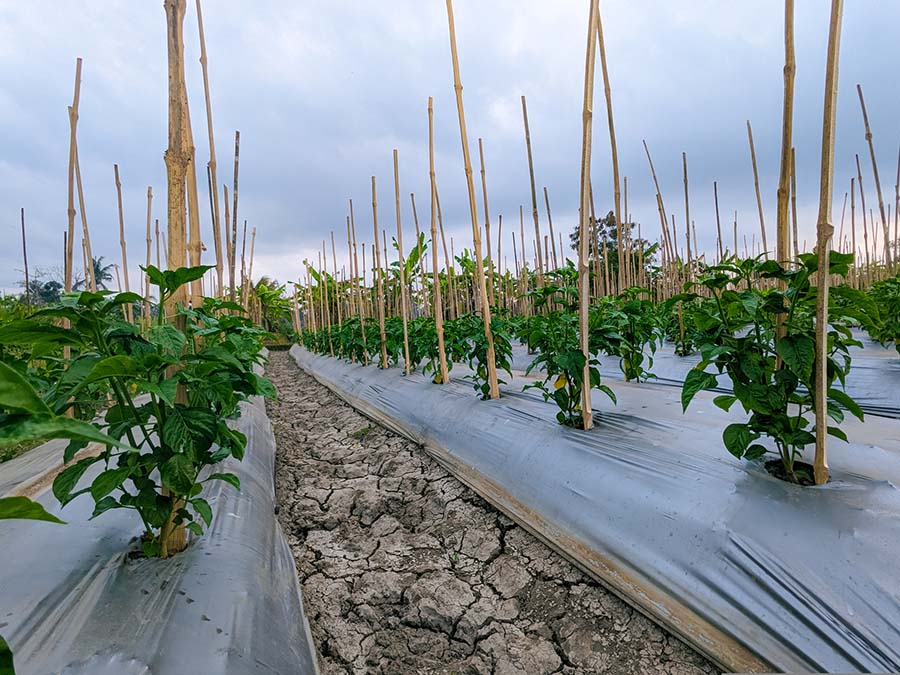Introduction to Engineered Geotextiles in Modern Agriculture
In commercial agriculture, soil is much more than a bed of dirt; it’s a critical production component, affecting everything from water availability and weed pressure to soil health and operational efficiency. For generations, managing productive soil has involved diverse practices ranging from traditional tillage and
organic mulching to early forms of synthetic ground covers. Each approach has presented a distinct combination of benefits and limitations, including labor intensity, material longevity, environmental impact, or effectiveness across diverse cropping systems and climates.
The constant pursuit of better yields, smarter resource use, and more sustainable farming pushes the industry forward. However, changing market conditions demand more than minor tweaks; instead, a clear move to more deliberate, engineered strategies for ground management is needed. Today, farmers need practical ways to get more from their inputs, cut down on waste and losses, and gain better control over the growing environment.
The ongoing search for more effective solutions has produced a variety of increasingly sophisticated ground cover materials. Among these, specialized materials like slit film woven geotextiles are proving to be genuinely helpful assets, offering commercial growers new options for performance and operational control. This ebook focuses on exactly how these engineered fabrics function and where they provide real advantages.
Deconstructing Silt Film Woven Geotextiles
So, what exactly are slit film woven geotextiles? Basically, they’re engineered fabrics explicitly created for demanding ground applications. Unlike some landscape fabrics that might feel more like felt or matted fibers, these are distinctly woven products, giving them distinct strength and structure.
The manufacturing process starts with a durable polymer, most commonly polypropylene, which is chosen for its toughness and resistance to moisture and common soil chemicals. First, melted plastic resin is extruded into a continuous sheet. Then, in a key step that gives “slit film” its name, the sheet is precisely cut, or slit, into multiple narrow, flat tapes or yarns. Unlike the round threads or strings used for ropes or woven textiles, these tapes are intentionally flat, which affects the finished fabric’s properties. For agricultural use, where sun exposure is a given, crucial additives like UV stabilizers are mixed in during manufacturing to help the material withstand prolonged sun exposure.
Once these flat yarns are produced, they are tightly woven, similar to traditional cloth weaving but on an industrial scale. The weaving process creates a strong, dimensionally stable fabric. In fact, if you look closely at a slit film woven geotextile, you’ll see this grid-like pattern of interlaced flat yarns. The fabric often has a stiff texture compared to softer, nonwoven materials.
Key Distinction: Woven Slit Film vs. Other Geotextiles & Ground Covers
Now that we have a clearer picture of what slit film woven geotextiles are and how they’re made let’s see how they stack up against other common ground cover materials commercial farmers might encounter. Understanding these differences can help you select the right tool for the job.
First, let’s consider other geotextiles, particularly nonwovens. You’ve probably seen nonwoven landscape fabrics, which often have a felt-like or matted appearance. The key difference starts with their construction: nonwovens are typically made from randomly arranged fibers bonded together by heat, chemicals, or needle-punching rather than being woven in an ordered structure. This gives them distinct properties.
Nonwovens generally are more permeable to water, making them excellent for applications where rapid drainage and filtration are primary goals, like wrapping French drains. However, this high permeability often comes with lower tensile strength and puncture resistance than their woven counterparts. In contrast, the interlaced flat yarns of slit film woven geotextiles provide superior strength, dimensional stability, and durability. They’re a better option for heavy-duty weed control, soil stabilization, and applications requiring a more robust physical barrier with controlled, rather than high, permeability.
Next, let’s think about traditional plastic films, like polyethylene sheeting. The most significant difference here is permeability – or rather, the lack of it. Standard plastic films are continuous, single sheets and largely impermeable to air and water. While this can be effective for short-term moisture retention or soil solarization, it can also lead to significant drawbacks in many agricultural settings. Impermeable films can prevent rainfall or irrigation from reaching the soil effectively, causing water to pool on the surface or run off. They also block essential air exchange, leading to anaerobic soil conditions detrimental to root health and beneficial microbes. Slit film woven geotextiles, being permeable, allow the soil to “breathe” and water to infiltrate, fostering a healthier environment for plant roots.
Finally, there are various temporary or less durable options like newsprint, cardboard, or even loose organic mulches when used primarily as a physical barrier. While these can have their place for short-term or small-scale needs, they generally lack the longevity, consistent performance, and robustness required for commercial agricultural operations. Slit film woven geotextiles are engineered as a long-term solution, designed to withstand demanding field conditions season after season.
The choice of the right ground cover always depends on the specific application and performance requirements. Slit film woven geotextiles offer a distinct set of engineered characteristics – particularly their strength, durability, and controlled permeability – that make them a highly effective and specialized option for the challenges of modern commercial farming.
The Science of Controlled Permeability
Now that we’ve established that slit film woven geotextiles allow water and air to pass through, unlike solid plastic films, let’s consider how those tightly interwoven flat tapes create “controlled” permeability and why that’s an advantage in farming.
Permeability comes from the tiny openings or pores naturally formed where the flat strips interlace during weaving. Water and gas molecules can travel through these pores to reach the soil (and vice-versa), eliminating the issues associated with impermeable barriers, like waterlogging or suffocated roots.
However, the control aspect comes from the unique geometry of these pathways. Because the yarns are flat tapes woven tightly, the pores are typically smaller and follow a more complex, meandering path than nonwoven geotextiles’ relatively open, random structure. Think of it like water flowing through a winding, narrow channel versus a wide, straight ditch. The flow is still happening, but its velocity is moderated.
Moderated flow helps strike a critical balance in agricultural operations by allowing sufficient rain or irrigation to reach the root zone without generating excessive surface runoff. At the same time, it promotes essential air exchange, maintaining aerobic conditions necessary for healthy root respiration and beneficial soil microbial activity. Even better, it slows the rate of water movement within the soil, reducing rapid drainage away from roots and limiting evaporative loss from the soil surface back into the air more effectively than more permeable materials.
This engineered balance – allowing necessary exchange while limiting excessive loss – is why “controlled permeability” is a significant advantage. It helps create a more stable and favorable microenvironment in the root zone, optimizes water resources, and supports plant health, which are key goals in commercial farming.
Core Performance Properties for Commercial Agriculture
While controlled permeability is a standout feature, several other core properties of slit film woven geotextiles make them particularly valuable in commercial farming. These characteristics make sure the fabric can withstand the rigors of field conditions, day in and day out.
Tensile strength and overall durability are perhaps the most important characteristics. Thanks to their unique construction, woven polypropylene fabrics exhibit excellent resistance to pulling and stretching. For farmers, this means the material can handle the stresses of installation, foot traffic, and even light machinery without tearing or losing its shape. This inherent toughness makes it an effective long-term ground cover.
The next characteristic, puncture and tear resistance, is closely related to strength and durability. Farm environments often involve sharp stones, woody debris, or accidental contact with tools. The nature of slit film wovens allows them to resist common field hazards better than many lighter-weight or nonwoven alternatives. This helps maintain the barrier’s integrity over time, preventing breaches that could allow weed growth or compromise soil separation.
A key consideration for any material used in agriculture is its chemical compatibility. Slit film woven geotextiles are usually made from polypropylene, a generally inert material that’s highly resistant to degradation from common agricultural chemicals. This includes fertilizers, pesticides, herbicides (though the fabric itself reduces the need for these), and the typical range of soil pH levels. Farmers can be confident that these fabrics won’t break down prematurely due to routine chemical applications or soil conditions.
Finally, resistance to UV degradation is critical. Since many materials exposed to sunlight can break down over time, quality slit film woven geotextiles intended for agricultural use are manufactured with UV stabilizers. They protect the polymer structure from damage introduced by ultraviolet radiation, significantly extending the fabric’s functional lifespan even under direct and prolonged sun exposure. Effective UV resistance keeps the material strong and effective for multiple growing seasons.
What’s Next?
Understanding the engineered structure of slit-film woven textiles is the first step. Now, let’s put that knowledge to work. The next chapter explores how slit film woven geotextiles, and their unique controlled permeability, can help you optimize water resources, enhance irrigation effectiveness, and even reduce water costs in your operation.




